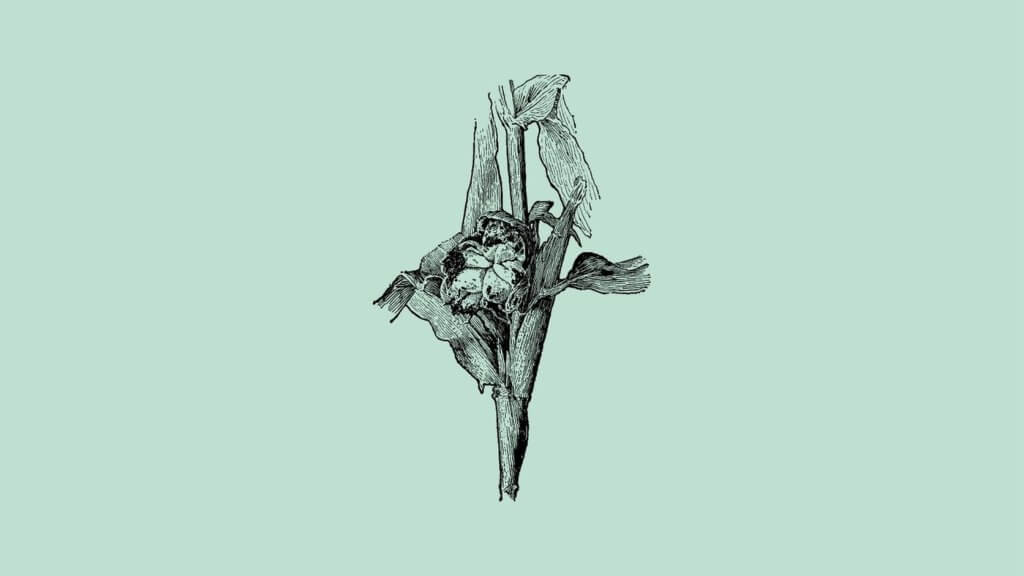Cuitlacoche, also known as corn smut, corn truffles, Mexican truffles or huitlacoche, is a culinary delicacy that is a type of fungal infection that affects corn (maize) plants. While it might not seem appealing at first glance, cuitlacoche is considered a gourmet ingredient in Mexican food and has a unique flavor and texture.
If you have the opportunity to try cuitlacoche, it’s worth experiencing this distinctive and culturally significant ingredient in Mexican cuisine.
Is cuitlacoche a type of mushroom?
Cuitlacoche is not a type of mushroom. It is a type of fungal infection that affects corn (maize) plants. The corn fungus responsible for cuitlacoche is Ustilago maydis. When this fungus infects corn ears, it causes the kernels to develop swollen, gray-black growths that resemble mushrooms or fungal galls.
While cuitlacoche shares some visual similarities with mushrooms, it is a distinct type of fungal growth that develops specifically on corn plants.
What Are You Foraging For Right Now?
We're thrilled to hear your ideas. What would you like to submit today? Feel free to share your thoughts and experiences with us.
What is the scientific name for huitlacoche?
The scientific name for huitlacoche is Ustilago maydis. It is also commonly referred to as corn smut.
How to identify cuitlacoche?
1. Appearance: Cuitlacoche appears as swollen, gray-black growths on the ears of corn. These growths can vary in size and shape but generally have a mushroom-like or irregular appearance.
2. Texture: The texture of cuitlacoche can be soft and slightly gooey, similar to cooked mushrooms. The growths might rupture and release a powdery mass of fungal spores.
3. Color: The growths are typically dark gray to black in color, which sets them apart from the healthy kernels on the corn ear.
4. Location: Cuitlacoche usually develops on the ears of corn, especially at the base of individual kernels. It can affect a few kernels or spread across the entire ear.
5. Stage of Development: Cuitlacoche tends to develop as corn plants mature, especially during periods of high humidity or damp conditions.
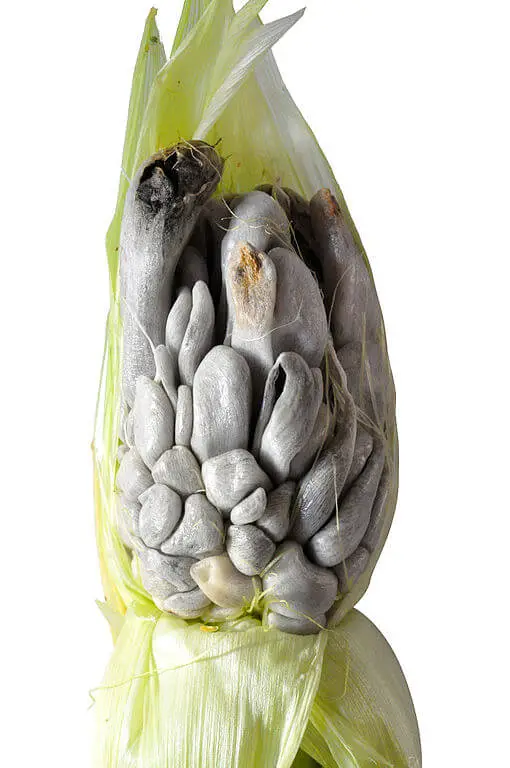
What does huitlacoche taste like?
Cuitlacoche has a unique flavor that is often described as earthy, slightly sweet, and with a hint of mushroom-like umami.
Its taste is distinct and different from the flavor of fresh corn. The texture of huitlacoche can be soft and slightly gooey, similar to cooked mushrooms.
If you want to try more mushroom-like recipes, check out our articles on:
Where is cuitlacoche found?
Cuitlacoche is most commonly found in Central and North America, particularly in Mexico and parts of the United States.
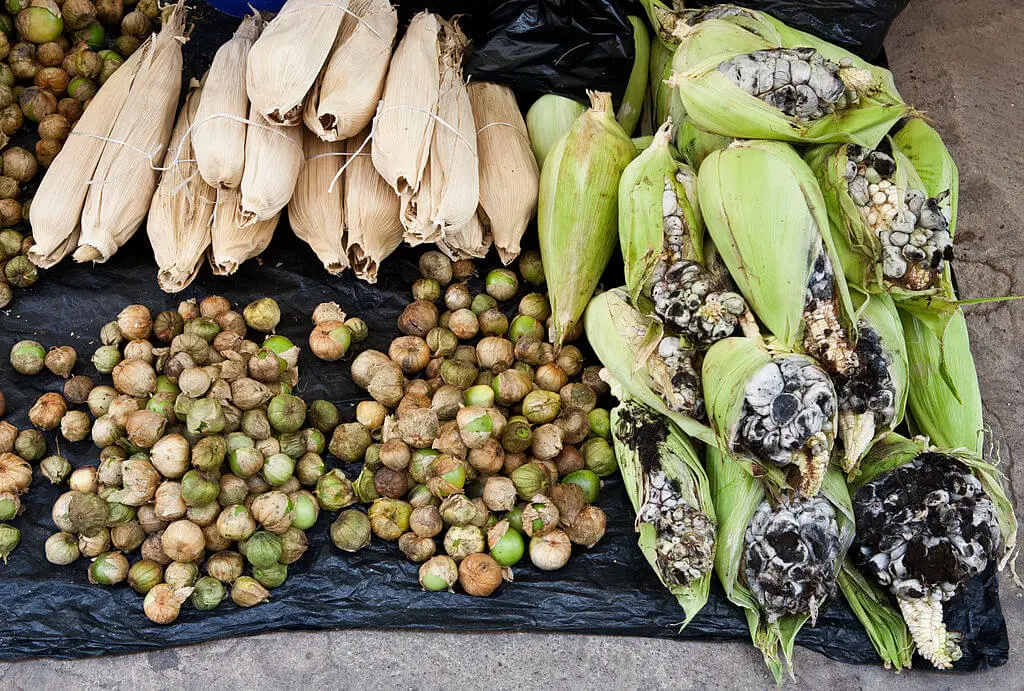
How To harvest cuitlacoche?
It can be challenging to find cuitlacoche growing naturally, as most corn in the United States is grown on large plots of land and sprayed with chemicals.
- Your best bet is organic farms or growing your corn. If you are fortunate enough to live where sweet corn is grown without sprays and pesticides, the rainy season is the best time to forage for corn smut.
- Corn smut is more likely to grow in areas where the natural cycle of the corn has been disturbed, such as by weather or predators.
- Look on the edges of the field where deer tend to nibble or for areas damaged by floods, hail, or other severe storms.
- If you find corn smut growing, look for ears of corn dry to the touch. The galls should be gray in color, plump, and firm to the touch instead of mushy.
- Pull the husk down and check the lower kernels if galls at the top look overripe.
How to prepare and eat cuitlacoche?
Once cooked, cuitlacoche can be used in various ways:
- Fillings: It’s often used as a filling for tacos, tortillas, quesadillas, enchiladas, and tamales.
- Soups: You can add cuitlacoche to soups, stews, and broths for added flavor and texture.
- Eggs: Mix it into scrambled eggs or omelets for a unique twist.
- Sides: Serve it as a side dish alongside rice, beans, or grilled meats.
Look for fresh cuitlacoche at local markets or specialty stores that carry Mexican ingredients. Choose plump, dark gray to black growths that are not overly dried out or discolored.
Cuitlacoche is commonly sautéed with onions, garlic, and sometimes chiles to create a flavorful base for dishes.
- Heat a skillet or pan over medium heat and add a bit of oil.
- Add chopped onions and garlic to the pan and sauté until they become translucent.
- Add the cleaned cuitlacoche to the pan and sauté for a few minutes until it’s heated through and cooked.
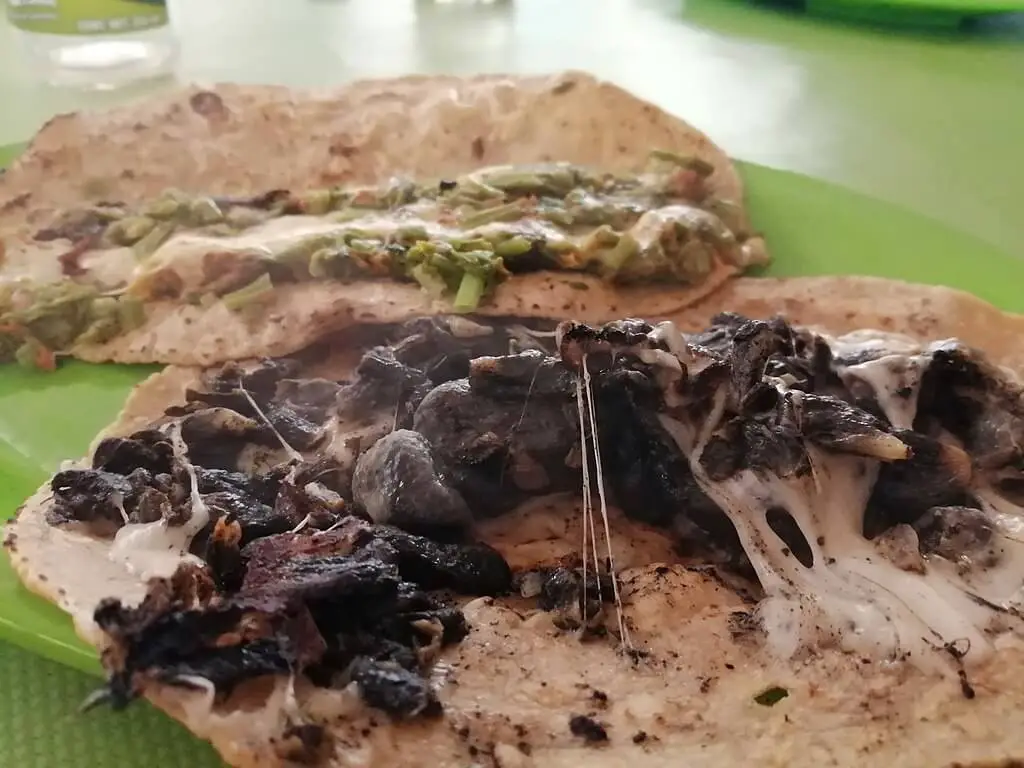
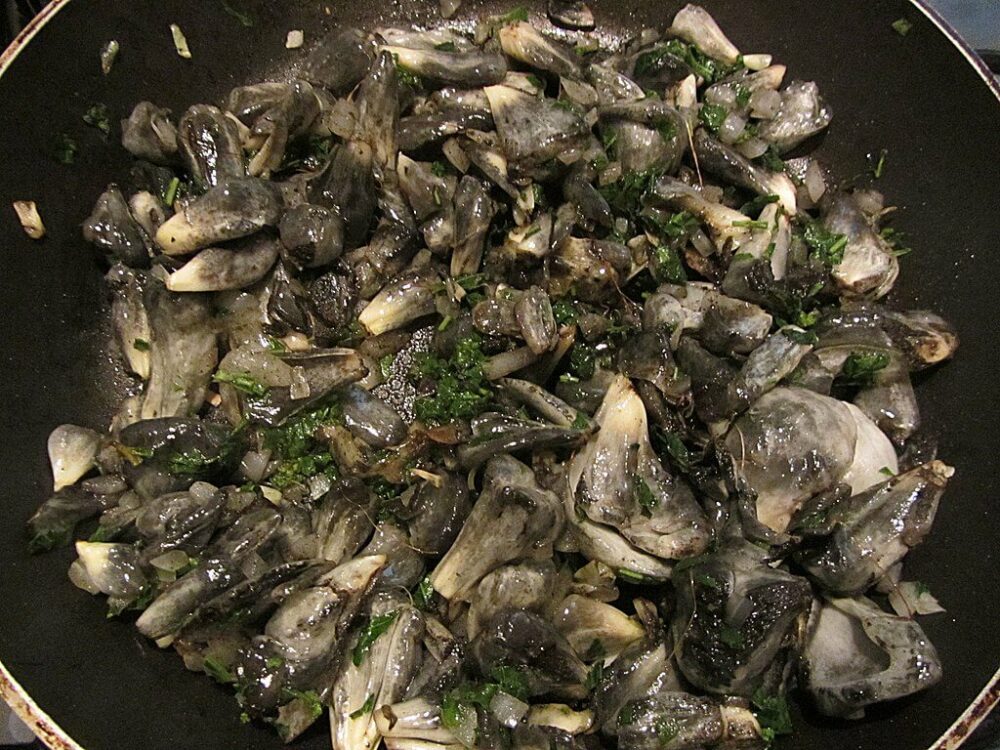
Is corn smut toxic in any way?
No, it is not toxic to either humans or livestock. However, be careful to ensure the fungus is corn smut and not another type of fungus.
What to read next: The Best Mushroom Hot Chocolate Recipe
Rachel Schmeltzer is a writer, mom, teacher, and dreamer. She enjoys reading, traveling, history, spending time with her boys and her cats, and foraging in the woods of Minnesota.

